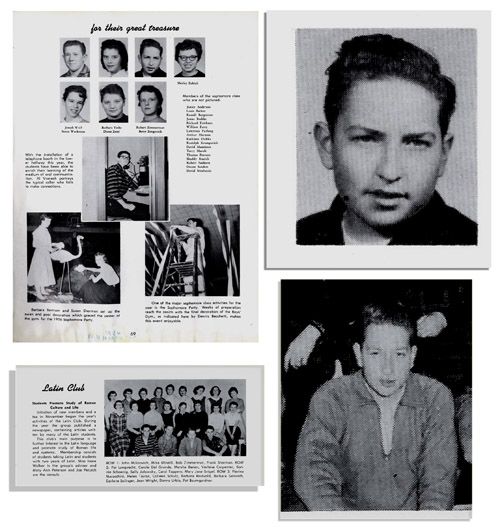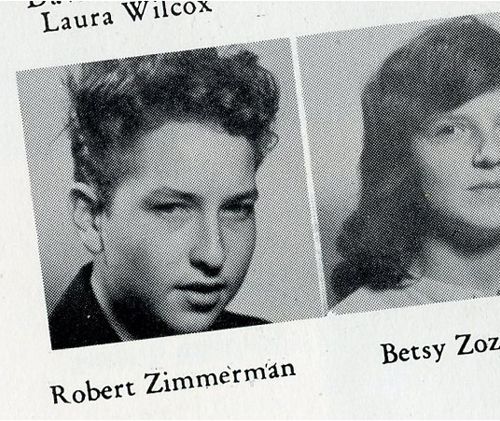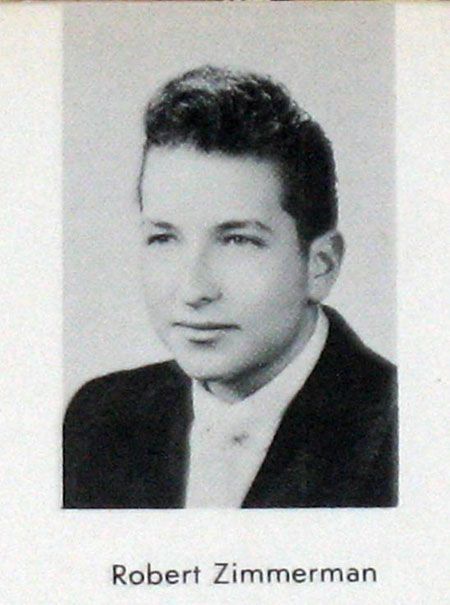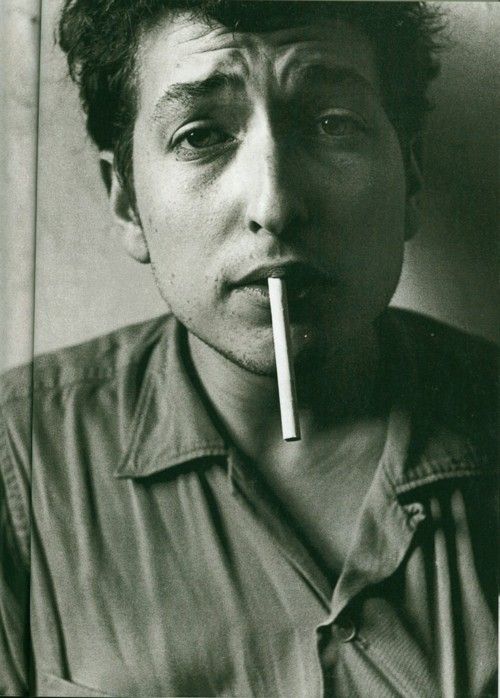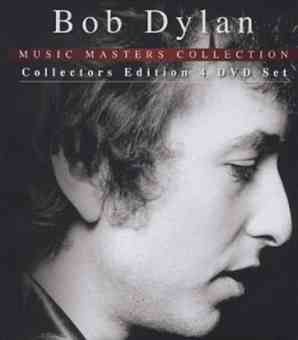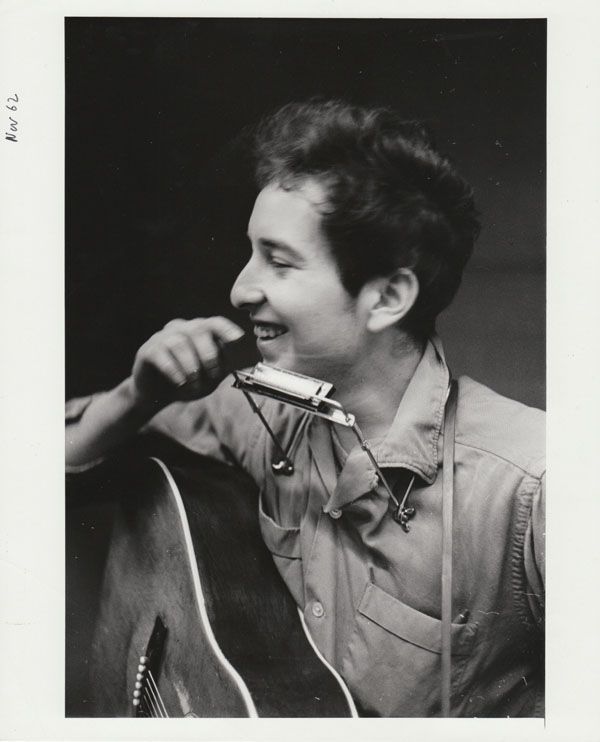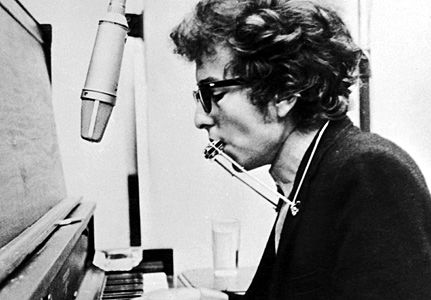|
|
Post by artemis on Sept 15, 2012 15:11:41 GMT -5
No, not in that article, but definitely in this one, Glass.... "The Bob Dylan Motorcycle-Crash Mystery On July 29, 1966, something happened to Bob Dylan while he was riding his motorcycle near his Woodstock, New York, home. Forty years and a small library of biographies later, it’s still hard to be much more precise or detailed than that. What really befell Dylan on that day remains, like so much in this pop-culture icon’s closely guarded life, cloaked in mystery. Ill-defined or not, the accident has been treated as a major event in Dylan’s life; at least one biographer divides the founder of folk-rock’s career into “pre-“ and “post-accident.†What made the event so significant? Since 1961, when he had arrived in New York, Dylan’s life had moved quickly. In 1965 and ’66 the pace only increased. As one observer put it, Dylan wasn’t merely burning his candle at both ends; he was using a blowtorch. His incredible productivity—perhaps his three best albums, Bringing It All Back Home, Highway 61 Revisited, and the double album Blonde on Blonde, were recorded within a 14-month span—was very likely fueled by methamphetamine; bone-thin in ’66, Dylan had the giveaway look of a speed freak. In June 1966 he returned from a nine-month world tour, made especially grueling by the relentless hostility with which audiences met his new sound (he’d plugged his guitar in and added an electrified backup band). Though he was exhausted, embittered, and thoroughly road-weary, his aggressive manager, Albert Grossman, had booked him into a 64-date American tour, due to start in August. If Grossman had gotten his way, writes the biographer Howard Sounes, Dylan would have been “on the road interminably until every last ticket dollar had been sucked up.†Other commitments loomed as well. Dylan’s stream-of-consciousness “novel,†Tarantula, was scheduled for publication. Reading the galleys in July, he had misgivings about the entire book and told Macmillan, his publisher, that he wanted to revise it. He was given two weeks. At the same time, ABC-TV wanted an hour-long documentary of the just-completed world tour; all that existed as of July was miles of unedited footage. The accident was Dylan’s means of escape from an unendurably fast-paced, pressurized life. As he said in a 1984 interview, “When I had that motorcycle accident . . . I woke up and caught my senses, I realized that I was just workin’ for all these leeches. And I really didn’t want to do that.†At some point during his convalescence he realized that he wanted a much more tranquil, family-centered life. (He had secretly married Sara Lownds in 1965, and he and she would raise five children together). His music changed, too, from the white-hot fury of Highway 61 Revisited and Blonde on Blonde to the sparer, quieter sound of 1968’s John Wesley Harding and 1969’s Nashville Skyline. He stayed off the road until 1974, when he toured with the same players who had backed him on the 1965-66 tour; they had since become famous as the Band. But enough about the crackup’s aftermath; what about the crackup itself? According to Sounes, who gives the fullest, most judicious account, on the morning of July 29 Dylan and his wife drove from Woodstock to Albert Grossman’s house in nearby Bearsville. Dylan’s motorcycle was in Grossman’s garage, and Dylan wanted to take it to a repair shop. He set off on the bike from Grossman’s with Sara following him in their car. An anonymous source, a close friend of Dylan’s, told Sounes that as Dylan started on his way, he lost his balance and fell off the bike, and it fell on top of him. He himself told his biographer Robert Shelton that he hit an oil slick. He gave a different, longer account to the playwright Sam Shepard, who published it in Esquire as part of a one-act play. “It was real early in the morning on top of a hill near Woodstock,†he told Shepard. “I can’t even remember how it happened. I was blinded by the sun for a second. . . . I just happened to look up right smack into the sun with both eyes and, sure enough, I went blind for a second and I kind of panicked or something. I stomped down on the brake and the rear wheel locked up on me and I went flyin’.†It’s impossible to choose between these varying accounts. In other words, we’re not likely ever to know what really occurred. The first reports of the accident had Dylan barely escaping with his life. But if he had been seriously injured, an ambulance would have been called. None was, nor did Sara take her husband to the hospital. Instead, she drove him to the home office of his doctor, Ed Thaler, 50 miles away in Middletown, New York. As Sounes writes, “This was a grueling one-hour drive by country roads, not a journey for a man in dire need of medical help.†It’s impossible to pinpoint Dylan’s injuries. By most accounts, including his own, he broke several vertebrae. “The damp weather still affects the wound,†he told Shelton some time later. When the filmmaker D. H. Pennebaker visited him several days after the accident, he was wearing a neck brace, although, says Pennebaker, “he didn’t appear very knocked out by the accident.†Dylan stayed at Dr. Thaler’s for six weeks. If he wasn’t extensively injured, why the long convalescence, especially when he had a wife and baby waiting at home? Rumors have long circulated that he was recovering from a heroin addiction, although Thaler has denied this. â€He did not come here regarding any situation involving detoxification,†the doctor told Sounes. But Dylan had to stop using drugs—if not heroin, then amphetamines—at some point, and this was a logical time. Post-accident photographs of Dylan show him fleshed out, not the wraith of 1965-66. The accident itself was not a major event, but it gave him a much-needed chance to stop, rest, and take stock of his incredible journey since 1961. When he returned to work, it was at a much less frenetic pace than before the accident. He may not have been exaggerating when he later told an interviewer, “I was pretty wound up before that accident happened. I probably would have died if I had kept on going the way I had been.†www.freerepublic.com/focus/f-chat/1674242/postsThe comments are worth reading too IMO.... |
|
|
|
Post by J Gimmysum Truth on Sept 24, 2012 3:19:50 GMT -5
That new Rolling Stone interview with BOB DYLAN is a must read. Check out pp46-47.
|
|
|
|
Post by artemis on Sept 24, 2012 9:33:34 GMT -5
JGST, can u scan those pages and post them here?
|
|
|
|
Post by J Gimmysum Truth on Sept 27, 2012 8:52:40 GMT -5
|
|
|
|
Post by artemis on Sept 27, 2012 9:01:38 GMT -5
Great one, thanks.... ROLLING STONES is not sold here, in my country....
|
|
|
|
Post by artemis on Nov 14, 2012 15:58:25 GMT -5
|
|
|
|
Post by artemis on Jan 26, 2013 18:35:21 GMT -5
|
|
|
|
Post by artemis on Mar 13, 2013 15:22:23 GMT -5
"Bob Dylan admitted to American Academy of Arts and Letters
LOS ANGELES (TheWrap.com) - Bob Dylan has become the first rock star voted into the American Academy of Arts and Letters, the century-old arts organization announced Tuesday.
The iconic singer-songwriter was one of seven named for induction into the group, which honors artists in music, literature and visual arts.
Voted into the academy's core membership were the novelist Ward Just, known for his stories set in Washington, D.C.; minimalist artist Richard Tuttle and painter and printmaker Terry Winters. The academy announced three honorary choices, all from overseas: Spanish architect Rafael Moneo, South African writer Damon Galgut and Belgian artist Luc Tuymans.
Academy officials couldn't decide whether Dylan belonged for his words or his music, executive director Virginia Dajani told the Associated Press, so they settled on making him an honorary member.
"The board of directors considered the diversity of his work and acknowledged his iconic place in the American culture," Dajani said. "Bob Dylan is a multi-talented artist whose work so thoroughly crosses several disciplines that it defies categorization."
Meryl Streep, Woody Allen and Martin Scorsese, who directed "No Direction Home," a 2005 documentary about Dylan, have been similarly honored by the academy.
While he isn't the first musician to be named to the group, his predecessors have come mainly from the classical world. Dajani and other officials have said that the academy is reluctant to vote in rock performers because they already have organizations, such as the Rock and Roll Hall of Fame, to honor them.
The 71-year-old Dylan's song list includes "Blowin' in the Wind," "The Times They Are A-Changin'" and "Like a Rolling Stone."
He's used to breaking barriers. Dylan was the first rocker to receive a Pulitzer Prize, an honorary award in 2008, and the first to be nominated for a National Book Critics Circle award, for his memoir "Chronicles: Volume One."
An induction and awards ceremony will be held in May. Pulitzer Prize-winning novelist Michael Chabon, who was inducted into the organization last year, will give the keynote address, entitled "Rock `n' Roll."
The New York-based academy, which was founded in 1898, consists of 250 artists, musicians and writers. Openings occur upon a member's death, with current inductees nominating and voting in new ones."
|
|
|
|
Post by beatlies on Aug 24, 2013 20:57:54 GMT -5
Bob Dylan: facing the music
Bob Dylan once dismissed his 1970 album Self Portrait as a joke. But newly released recordings from that era suggest that something serious was going on in the singer's mind
Share 301
inShare
2
Email
John Harris
The Guardian, Friday 23 August 2013 13.45 EDT
Jump to comments (139)
Portraits by the artist … Bob Dylan in his studio in 1990. Photograph: David Michael Kennedy
"I don't know if I should keep playing this. Nobody's calling in and saying they want to hear it or anything … usually when something like this happens people say, 'Hey, the new Dylan album,' but not tonight." The words are those of an unspecified radio DJ, quoted in a 1970 Rolling Stone review of the album Self Portrait, a collection of 24 pieces of music that completely confounded its audience. The writer was Greil Marcus, who would go on to write some of the best commentary and criticism about Bob Dylan and his art, and whose opening sentence on this occasion eventually made his piece the most famous record review ever written: "What is this sh*t?"
Bob Dylan
Face Value, an exhibition of pastel portraits by Bob Dylan
National Portrait Gallery, London
WC2
Starts 24 August 2013
Until 5 January 2014
Venue details
All musical oeuvres contain duds. Plenty of musicians fall into phases where such things are all they can produce. This was Dylan's fate for much of the 1980s, as owners of such albums as Empire Burlesque and Down in the Groove will know. Self Portrait, though, is rather different: this was a deliberately bad record, apparently created to distance its creator from his public, and earn him some peace and quiet. "The reason that album was put out [was] so people would just at that time stop buying my records, and they did," Dylan later reflected. That explanation came in 1981; three years later, he described Self Portrait as "a joke".
It reached number one in the UK charts, and number four in America. Even now, millions own it – a strange package, fronted by a faux-naif Dylan painting, in keeping with its title. It comprises covers of songs made famous by the Everly Brothers, Simon and Garfunkel, the singer-songwriter Gordon Lightfoot, and more. Plenty of the tracks are smothered in syrupy arrangements, dubbed on to Nashville sessions at which Dylan was not even present. In three songs taken from his 1969 performance at the Isle of Wight festival with The Band, he sounds tired and detached: even the version of that biting countercultural anthem "Like a Rolling Stone" suggests something played by a half-cut cabaret performer.
The whole thing is stretched over 73 minutes, and the idea that it amounts to some kind of neo-Dadaist prank is there in its opening track. The music could soundtrack the opening titles of a spaghetti western, and a chorus of backing singers intones the same couplet 15 times: "All the tired horses in the sun / How'm I s'posed to get any riding done?" The approved version of the lyrics says "riding"; at times, though, it sounds distinctly like "writing".
In the first volume of Chronicles, the memoir he published in 2004, Dylan explained the genesis of Self Portrait thus: "I just threw everything I could think of at the wall, and whatever stuck, released it." He also put it firmly in the context of a time when he was a new father, trying desperately to keep his life simple, while running away from the droves of young Americans who still thought he was their king, and a purveyor of "message songs".
Having recovered from the motorcycle accident he suffered in June 1966, Dylan had remained in the upstate New York settlement of Woodstock, where he was quickly joined by the musical soulmates who would soon call themselves The Band. To his horror, though, Woodstock also became a magnet for exactly the kind of people he was trying to avoid. Attempting to shake himself free, he wrote, he did "unexpected things like pouring a bottle of whiskey over my head and walking into a department store and act[ing] pie-eyed, knowing that everyone would be talking amongst themselves as I left". His image, he resolved, "would have to be something a bit more confusing, a bit more humdrum". Unintentionally, that serves as a pretty good description of Self Portrait, a record both far too ordinary and completely perplexing.
Self Portrait, the 1990 album
And then, 43 years after it was recorded, there came some unexpected news. In July this year, Dylan's record company announced the 10th instalment of the so-called Bootleg Series, whose sporadic collections of unreleased archive material began in 1991. From those who follow Dylan closely, there were gasps of surprise at what was about to be released: an anthology, available in both standard and "deluxe" versions, titled Another Self Portrait. A four-minute YouTube film told the essential story: in 2012, a tape had been found containing material from the sessions that produced the original album, which had sparked the idea of returning to this period anew. On the face of it, this rediscovered music told the story of a project that Self Portrait travestied – whose working title, according to one of the musicians involved, might have been Folk Songs of America, pointing to two later albums on which Dylan re-explored the folk repertoire, Good as I Been to You (1992) and World Gone Wrong (1993).
Was this, perhaps, further proof of the modern music industry's tendency to wring even its most lifeless assets dry? The opening sentence of the Marcus review still hangs heavy, and the fact that Self Portrait has long been understood as an act of self-sabotage suggested an obvious update: "What is this new sh*t?"
But Another Self Portrait is not like that at all. A lot of it is revelatory, confirming that Dylan did indeed begin the Self Portrait period with the intention of creating an anthology of songs that would simultaneously tap back into his roots in orthodox American folk music, while also pushing him somewhere new. There are songs written by the Pennsylvania-born singer-songwriter Eric Andersen and Tom Paxton and Bob Gibson, both folk singers whose age and musical style kept them clear of the counterculture that almost buried Dylan under the weight of its expectations.
Dylan returns to the old Scots ballad "The Daemon Lover" – given its American title "House Carpenter", just as it had been when he first recorded it in 1961 – and the American folk standard "Railroad Bill". As with material that eventually made it on to Self Portrait, where it was adorned with drums, bass and strings, all these songs are arranged simply: Dylan's voice and guitar, additional guitar parts by the New York multi-instrumentalist David Bromberg, and his arranger and bandleader Al Kooper on occasional piano.
But most suprising is the quality of Dylan's singing. As part of the build-up to Another Self Portrait, Sony Music put out a video to accompany a version of an 18th-century English folk song titled "Pretty Saro" – and on this recording, among others, his voice seems able to stretch single syllables into miniature melodies. Sight unseen, you would probably not think it was Dylan you were listening to. His approach develops the softened, country tones he used on Nashville Skyline, which can also be heard in exerpts from the Isle of Wight concert, spruced up and included in the "Deluxe" edition. Around eight years later, after he had reverted to the coarser vocal stylings he developed during the 1960s, Dylan's voice began to slowly fade: it is on this material, much of which has never even made it on to illegal bootlegs, that one probably hears him peak as a singer.
Another Self Portrait
And there is more. Amid the Self Portrait material and Isle of Wight recordings are a smattering of pieces that were recorded during sessions for the albums that book-ended Self Portrait: Nashville Skyline and New Morning. (The latter, chiefly because of the reaction to Self Portrait, was acclaimed as a stunning return to form: "his best album in years", wrote Marcus.) Two items stand out: a version of New Morning's euphoric title track, with an added part for horns written by Al Kooper, and a take of "Sign on the Window" to which Kooper added strings, harp and piccolo.
In contrast to the schmaltzy Self Portrait, no Dylan recording has ever sounded so poised, not least when the music drops and he delivers four great lines: "Build me a cabin in Utah /Marry me a wife, catch rainbow trout / Have a bunch of kids who call me pa / That must be what it's all about."
If this period of Dylan's career has one overriding meaning, these lyrics spell it out. Most of his audience surely did not want to hear such things – not when Vietnam was tearing the country apart and some people were still looking to him for a sign. Moreover, although on paper such lyrics might look so hokey as to suggest an ironic put-on, I think he meant every word: in Chronicles, after all, he writes of fantasising about "a nine-to-five existence, a house on a tree-lined block with a white picket fence, pink roses in the backyard".
In the ultimate irony, Woodstock became not just the name of his adopted hometown, but the setting for the festival that traded on his association with the place, and led him to accept the offer to play the Isle of Wight as a means of escape. Again, Chronicles captures his horror at what was afoot: "The events of the day, all the cultural mumbo jumbo, were imprisoning my soul – nauseating me – civil rights and political leaders being gunned down, the mounting of the barricades, the government crackdowns, the student radicals and demonstrators versus the cops and the unions – the streets exploding, fire of anger boiling – the contra communes – the lying, nosy voices – the free love, the anti-money system movement – the whole shebang. I was determined to put myself beyond the reach of it all. I was a family man now, didn't want to be in that group portrait."
Self-evidently, all this was profoundly political. Dylan, after all, could easily be understood as someone now following small-c conservative impulses, founded on a disdain for the tie-dyed degeneracy into which the hippies had tumbled, and a horror at how divided America had become. On Music for Big Pink, the debut album The Band released in July 1968, the four Canadians and a southerner, who dressed like gold-rush prospectors – had made the same thoughts explicit. That album began with "Tears of Rage", a song with Dylan lyrics that surveyed the USA's generational war: "What dear daughter 'neath the sun / Would treat a father so / To wait upon him hand and foot / And always tell him, No?" On the front of the record was another faux-naif Dylan painting; the gatefold featured a photograph in which the group posed with their families, parents in the foreground – a symbol, their leader Robbie Robertson later said, of "rebelling against the rebellion".
The Band had accompanied him on the homemade recordings that were eventually released as The Basement Tapes – evocations of a long-lost America, captured not just in such original pieces as "I Shall Be Released" and "This Wheel's on Fire", but scores of folk songs. In turn, that music was followed by John Wesley Harding, the pared-down Dylan album full of biblical allusions which led on to Nashville Skyline and the music Dylan recorded with Kooper and Bromberg.
Too many accounts of Dylan's progress have characterised this period as a long, fallow spell in which he lost his way: in fact, aided by some of the most capable musicians he ever worked with, fascinating recordings were pouring out of him. This was not pop music. It remains for grown-ups, full of ambiguities and sadness, and a profound sense of American history. How great to hear it at last, removed from the games its author went on to play with it: a self-portrait so improved as to make the first almost irrelevant.
• Listen to an exclusive album stream from Another Self Portrait (1969-1971): The Bootleg Series Vol 10
|
|
|
|
Post by artemis on Nov 12, 2013 16:42:18 GMT -5
One hell of an irony, only him and FAUL....
"Dylan to finally collect French award
Paris (AFP) - Bob Dylan will on Wednesday finally collect a French award he was almost denied because of his pot-smoking and protesting past, officials confirmed on Tuesday.
Dylan, 72, will emulate Paul McCartney as one of only a handful of foreigners to receive the Legion d'Honneur.
The veteran US singer is in the French capital this week for three nights of concerts.
He was nominated for the award by avowed Dylan fan Aurelie Filippetti, France's minister of culture.
The nomination was blocked temporarily earlier this year after army general Jean-Louis Georgelin, the Grand Chancellor of the Legion, voiced reservations about Dylan's use of cannabis and anti-war politics.
Georgelin finally agreed to grant the award after a review of the "chaotic life and lyrics of an exceptional artist who is recognised in his own country and throughout the world as a major singer and a great poet".
Former Beatle McCartney received the Legion d'Honneur in September 2012.
Established by Napoleon, the Order of the Legion d'Honneur honours individuals who have served France in various ways.
Foreigners do not formally become members of the order but are decorated with the insignia of the legion in recognition of service to France or work that is deemed to uphold the ideals of the country."
|
|
|
|
Post by artemis on Nov 14, 2013 16:03:24 GMT -5
"Sheets like metal - Dylan tries hand at welding in new art venture
LONDON (Reuters) - Bob Dylan has swapped his guitar for a blowtorch for his latest artistic endeavor, welding massive iron gates from scrap metal that went on show in London on Thursday.
The "Mood Swings" exhibition at the Halcyon Gallery in central London marks the U.S. singer-songwriter's transition to a new form of art after publicly displaying his paintings for the past several years.
The imposing metal works, made over three years by welding together items such as wrenches, a meat grinder, a rollerskate and other scrap metal, appears chaotic at first glance.
But the works, priced from 35,000 pounds ($56,000), were described by the gallery as a statement on a bygone era of manufacturing in Dylan's hometown of Hibbing in Minnesota that is home to the world's largest open-pit iron ore mine.
"I was born and raised in iron ore country - where you could breathe it and smell it every day. And I've always worked with it in one form of another," Dylan, 72, said in a statement.
"Gates appeal to me because of the negative space they allow. They can be closed but at the same time they allow the seasons and breezes to enter and flow. They can shut you out or shut you in. And in some ways there is no difference."
Gallery president Paul Green said he expected the world premiere of Dylan's metalwork to attract thousands of art and music fans until its closure on January 25 next year.
"It's not about Dylan fans, this is about art collectors, it's about anybody that falls in love with the work, so it's a very, very diverse audience," Green told Reuters.
Dylan is currently on tour in Europe. He was awarded France's highest honor, the Legion of Honor, at a ceremony in Paris on Wednesday. He will play London's Albert Hall in late November."
|
|
|
|
Post by artemis on Nov 28, 2013 15:52:18 GMT -5
"Bob Dylan whips up tempest in return to 1966 London venue
Bob Dylan played London's Albert Hall this week for the first time since his fabled and tumultuous concerts there in 1966, his vitality and mystique intact five decades on since he revolutionised popular music.
This time round there were no boos and catcalls prompted by his use of electric instruments, just ovations as he led his crack band through a set that drew heavily from his latest album "Tempest" but also reached back into earlier stages of his career.
True to form, Dylan said not a word to the audience, letting the music speak for itself.
He kicked off on Wednesday night with the Oscar-winning "Things Have Changed" following it with "She Belongs to Me" - the only song which had also featured in the 1966 shows.
An early highlight was "What Good Am I" from 1989's "Oh Mercy". He also offered up gentle, almost jazzy versions of "Tangled Up in Blue" and "Simple Twist of Fate " from "Blood on the Tracks.
FIRE AND BRIMSTONE
But there was still plenty of fire and brimstone in the 72-year-old - "I'll pay in blood, but not my own" he snarled in "Pay in Blood", a track from "Tempest".
Further evidence he was not going soft was a bitter "Love Sick" from "Time Out of Mind", the 1997 album which ushered in a new creative era for Dylan which shows no sign of stopping.
Dressed in a gambler's coat and mariachi pants, Dylan either sat at a grand piano centre stage or sang at the microphone. His hands do not allow him to play much guitar these days.
But he treated the audience to plenty of his trademark wheezing harmonica. That his voice is a raspy croak is not news but it still sounded strong, and he looked spritely, his curly head of hair also a survivor from the 1960s.
His three shows at the Albert Hall this week are part of the so-called Never-Ending Tour which sees him playing about 100 shows around the globe every year, reshaping his classics in new versions which have both delighted and perplexed fans.
It was the first time Dylan had played the cavernous Victorian venue since the controversial shows 47 years ago which became the stuff of legend.
For those gigs he brought an electric group which later became known as The Band - but his then-new direction was greeted with anger by many fans who worshipped him as a politically engaged folk troubadour.
In a famous confrontation, for many years reputed to be at the Albert Hall, a fan shouted out "Judas" to which Dylan replied "I don't believe you" and instructed the band to "play f**king loud".
The concert, heckler included, was released in 1998 as "The 'Royal Albert Hall' Concert" - though in fact it was from the Free Trade Hall in Manchester.
It might have been fitting if for his return Dylan had played "Like a Rolling Stone", a 1966 show-stopper, but the Minnesota-born singer didn't get where he is by doing the obvious.
As an encore, he played a roaring "All Along the Watchtower" followed by a R'n'B version of the peace anthem "Blowin' in the Wind" before he disappeared into the night."
|
|
|
|
Post by artemis on Dec 5, 2013 15:40:38 GMT -5
Old moron trying to stay relevant, cant keep his mouth shut....
"Bob Dylan Charged in France for 'Inciting Hate'
PARIS—French magistrates have pressed preliminary charges against Bob Dylan, a poster child of the American civil-rights movement, for allegedly violating antidiscrimination laws in a 2012 magazine interview in which he appears to compare Croatians to Nazis and the Ku Klux Klan.
The probe is a turn of fortune for the iconic American singer in France, where just three weeks ago he was awarded the country's highest cultural award, the Légion d'honneur.
Preliminary charges of "public insult and inciting hate" were filed against Mr. Dylan on Nov. 11, a spokeswoman for the Paris prosecutor's office said Tuesday. That was two days before he was honored by France's culture minister, who called the singer "a hero for young people hungry for justice and independence."
The charges against Mr. Dylan, 72 years old, stem from a complaint by a Croatian organization in France, which claims comments by the singer in an interview with Rolling Stone magazine constitute an insult and provocation to racial or ethnic hatred.
Mr. Dylan—who hails from northern Minnesota, home to a sizable Croatian population when he was growing up— spoke at length in the interview about the issue of race in America, calling it "the height of insanity" that will hold any nation back.
"Blacks know that some whites didn't want to give up slavery—that if they had their way, they would still be under the yoke…, and they can't pretend they don't know that," Mr. Dylan was quoted as saying.
"If you got a slave master or Klan in your blood, blacks can sense that. That stuff lingers to this day. Just like Jews can sense Nazi blood and the Serbs can sense Croatian blood."
A representative of Mr. Dylan couldn't be reached for comment. A spokeswoman for Rolling Stone magazine declined to comment.
"I am surprised a man like Bob Dylan would make such comments," said Vlatko Maric, general secretary of the French branch of the Croatian World Congress. Mr. Maric said his group would withdraw the complaint if Mr. Dylan apologizes.
Croats are sensitive to any comparison with the Nazis because of mass killings of Serbs, Jews and others by the so-called Independent State of Croatia—which was allied with Nazi Germany—during World War II. Many Croats were also killed at the hands of Serbian militias.
Meanwhile, Croatia and Serbia were also bitter enemies in the 1990s war in the former Yugoslavia.
Accusations of using speech to incite hatred when filed to prosecutors in France automatically are referred to investigating magistrates, who then usually send those cases to trial after checking the authenticity of the litigious comments and the legitimacy of the plaintiff.
Frederic Pichon, a Paris-based lawyer who specializes in press law, said convictions for such charges typically are limited to fines of a few thousand euros."
|
|
|
|
Post by beatlies on Feb 23, 2014 20:59:10 GMT -5
[/img] upload.wikimedia.org/wikipedia/en/7/71/BobDylanBobDylan.jpg[/quote] Bob Dylan and the Ethics of Market Fascism Saturday, 15 February 2014 09:29 By Tony Kashani, Truthout | Op-Ed Bob Dylan.(Photo: William Claxton / Photopedia) Come senators, congressmen, Please heed the call Don't stand in the doorway Don't block up the hall For he who gets hurt Will be he who has stalled There's a battle outside And it is ragin'. It'll soon shake your windows and rattle your walls For the times they are a-changin'. Bob Dylan – "The Times They Are A-changin'," 1964 The Culture of Spectacle On Sunday, February 2, 2014, according to most reliable news sources, 111.5 million people (mostly US residents) participated in viewing the imperial spectacle known as the Super Bowl XLVIII. To be sure, this Super Bowl was not dissimilar to its predecessors; a made-for-television event of commodification, showcasing a package of mediocrity with a mind-numbing violent team sport to be utilized for selling useless junk. According to Bill Wanger, executive vice president for programming and research at Fox Sports, "Big-event television is a great way for people to have a communal event, to talk about it socially and to talk about it as a group." Wagner presupposes viewers are ready-made consumers who have lost the ability to think, or perhaps had never developed that ability in the first place. Therefore, if Fox Sports and their free market economy coconspirators set the agenda, people longing for community and communal experiences will simply follow it. What sets apart this spectacle from the previous ones is not so much the record-setting viewership, despite the noncompetitiveness of the game, but the de-imaginative commercials and the mediocre musical performances of pop artists. One single commercial separates this spectacle from its counterparts of the past: The two-minute drivel of mythologizing patriotism featuring Bob Dylan is the culprit. The Big Sellout When corporatism manages to buy the soul of an icon, the poet of the American civil rights movement, we are witnessing a clear sign of the market becoming an Ethics in itself. This is the man who, in May of 1963, walked out of "The Ed Sullivan Show" after CBS executives asked him not to sing "Talkin' John Birch Paranoid Blues," because it would offend the racist right-wing John Birch Society. Bob Dylan inspired many Americans then. But he must have broken many a liberal and progressive heart with his awfully scripted Chrysler commercial, which is filled with jingoistic lines about American pride and a seriously proto-fascist undertone. The commercial starts with, "Is there anything more American than America?" The ad closes with Dylan's voice over a montage of images of a man's arm pouring beer in medium shot, emphasizing the beer; a closeup of two hands making a precision watch; and finally, a wide-open overhead tracking long shot of many, mostly women, anonymous Asian assembly workers in facemasks putting together cellphones that resemble the ubiquitous (iconic) iPhones. These aesthetic choices are deliberate, to be sure. Advertising is an intentional medium. What do we hear him say? "So let Germany brew your beer. Let Switzerland make your watch. Let Asia assemble your phone. We . . . will build . . . your car." As American philosopher Harry Frankfurt, in his book, On Bullsh*t, puts it, "One of the most salient features of our culture is that there is so much bullsh*t. Everyone knows this. Each of us contributes his [or her] share. But we tend to take the situation for granted." Market Fascism at Play What ought to shock people is the proto-fascist line: "Let Asia assemble your phone," delivered by a Jewish American who, at one point in our history, fought for the rights of blacks, Latinos, Jews, Asians and other minorities in America with his iconic songs filled with mesmerizing poetry. Did Bob Dylan forget that Asia is the world's largest and most populous continent filled with a multitude of diverse cultures and the home of several ancient civilizations, not to mention the home to some of the world's top-selling automobiles, computers and internet technologies, just to name a few achievements? Does he not know that Mercedes Benz once owned Chrysler and now Chrysler is a wholly owned subsidiary of Italian multinational automaker Fiat? To be sure, the underlying assumption by the ad's producers is that most Americans - including Bob Dylan - are too ignorant to know this and will just make the assumption that more than 4 billion people, who are identified as Asians, are simply assembly workers for Apple corporation; Germans are only good for beer making; and the Swiss can only make fancy watches. This is the man who wrote "The Times They Are a-Changin." Dylan said of "The Times They Are a-Changin'": "This was definitely a song with a purpose. I wanted to write a big song, some kind of theme song, with short concise verses that piled up on each other in a hypnotic way. The civil rights movement and the folk music movement were pretty close and allied together at that time." One hopes that the irony of this situation is not lost on people who watch this mythologizing advertisement. Judging from the millions of hits, many people around the world, including many Asians, Germans and Swiss people have viewed it. The Neoliberal Agenda These is factual evidence that the neoliberal agenda [1] has achieved its central objectives of commodifying everything, removing an ethics based on morality from all facets of our society, and finally, transforming corporatism into an ethics - minus any morality - by itself. Is it any wonder? We live in an age where our public schools are directed to build curricula designed to suit the lowest common denominator, the commercial banks and hedge fund corporations swindle the public and create a financial meltdown on a global scale and yet get bailed out with taxpayers' money. We are in an era where anti-intellectualism is revered, and the culture industry, dominated by a handful of conglomerates, has decided that there is no longer any need for creativity at even the lowest common denominator level. Evidently, they presuppose that they have ample supply of docile consumers ready to buy anything packaged for quick arousal. This is what Henry Giroux calls, "zombie politics and culture," in his book, Zombie Politics and Culture in the Age of Casino Capitalism. This is the age where most people are bought and sold in the marketplace, only to be told that they are free - free to choose the product of their choice. Hope and Imagination The Bob Dylan-sellout incident is emblematic of the triumph of neoliberalism and its religious zeal for market fundamentalism. This is what Margaret Thatcher and Ronald Reagan had in mind when they built their alliance 30 some years ago. They wanted to buy as many Bob Dylans as they could to sell patriotism and a new form of market fascism to the world. They knew that myth always wins over facts and reality on the streets. Will they succeed? Perhaps the ratings tell us they have triumphed. After all, numbers don't lie, or do they? There is a number that is absent from news media accounts. Those who decided to tune out this fraudulent narrative of greatness. They can be counted too. The world is inhabited by nearly 7 billion people, and as of March 2013, 38.8 percent of this population is using the internet with regularity. And we can be sure that this number will rise rapidly. They are connected and interconnected. They talk to one another and exchange audiovisual messages of dissent, hope and change. Judging from what is happening around the world, despite the chaos in places like Syria, there is much room for optimism. History has proven that when an empire prevails, it has nowhere to go but down. The implosion will come. The Occupy Movement gave us a glimpse of the nonviolent uprising against neoliberalism. The seeds of global revolution are planted, and the more Bob Dylans they buy as pitchmen for their ideology, the more of their nakedness they shall reveal. Does the emperor have any clothes? Maybe a little loose diaper represented by a shell of a former poet. We can imagine a better world and then act upon that imagination. Indeed, times they are a-changin; when an idea's time arrives no market force can stop it. Notes: 1. Henry A. Giroux, Against the Terror of Neoliberalism: Politics Beyond the Age of Greed (NY: Paradigm Press, 2008). See also David Harvey, A Brief History of Neoliberalism (NY: Oxford University Press, 2007). |
|
|
|
Post by beatlies on Feb 5, 2015 15:55:50 GMT -5
|
|


